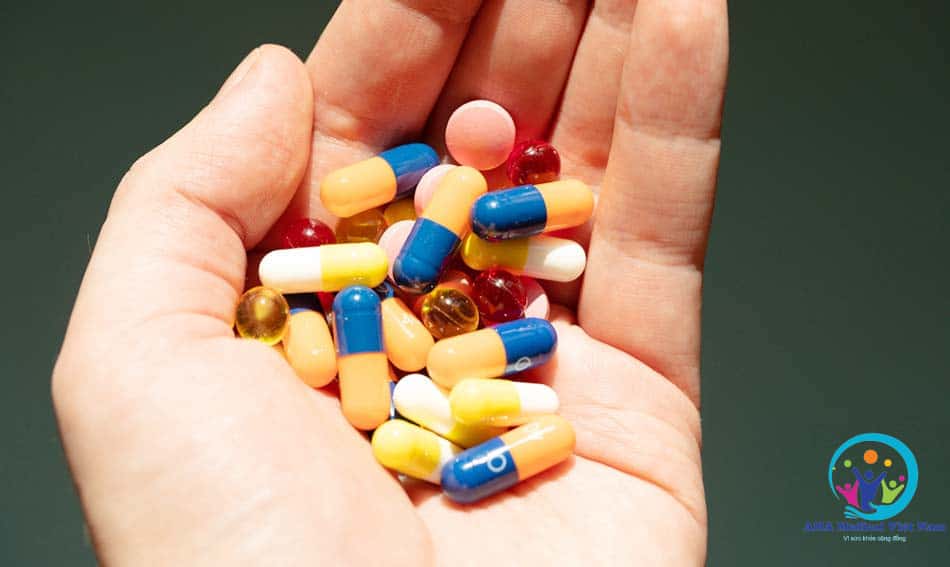Diagnosis and Management of Foodborne Illnesses
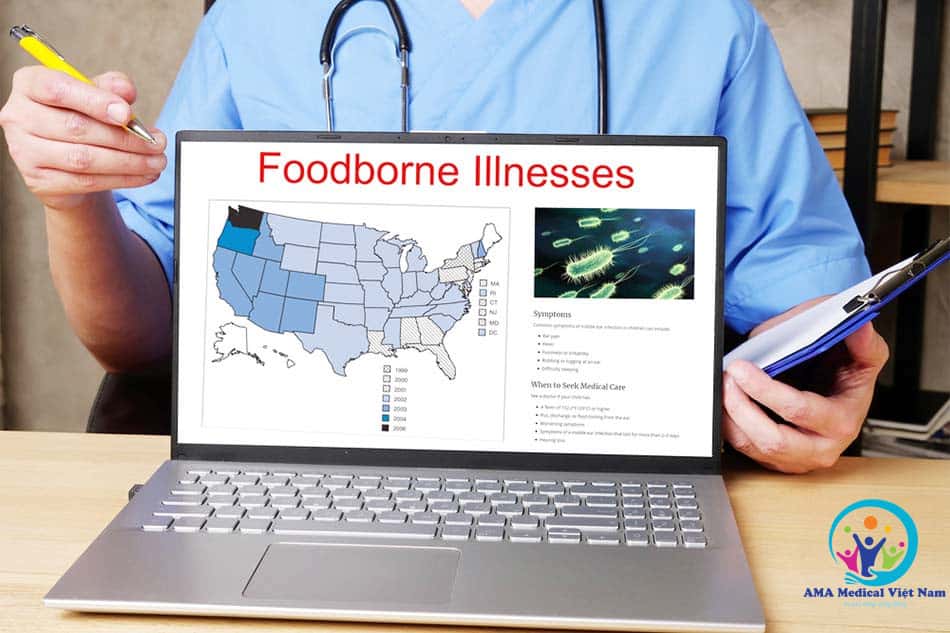
Foodborne illness is a serious public health problem. CDC estimates that each year 76 million people get sick, more than 300,000 are hospitalized, and 5,000 die as a result of foodborne illnesses. Primarily the very young, the elderly, and the immunocompromised are affected. Recent changes in human demographics and food preferences, changes in food production and distribution systems, microbial adaptation, and lack of support for public health resources and infrastructure have led to the emergence of novel as well as traditional foodborne diseases. With increasing travel and trade opportunities, it is not surprising that now there is a greater risk of contracting and spreading a foodborne illness locally, regionally, and even globally.
Physicians and other health care professionals have a critical role in the prevention and control of food-related disease outbreaks. This primer is intended to provide practical and concise information on the diagnosis, treatment, and reporting of foodborne illnesses. It was developed collaboratively by the American Medical Association, the American Nurses Association-American Nurse Foundation, CDC, the Food and Drug Administration’s Center for Food Safety and Nutrition, and the United States Department of Agriculture’s Food Safety and Inspection Service.
Clinicians are encouraged to review the primer and participate in the attached continuing medical education (CME) program.
Background
This primer is directed to primary care and emergency physicians, who are likely to see the index case of a potential food-related disease outbreak. It is also a teaching tool to update physicians and other health care professionals about foodborne illness and remind them of their important role in recognizing suspicious symptoms, disease clusters, and etiologic agents, and reporting cases of foodborne illness to public health authorities.
Specifically, this guide urges physicians and other health care professionals to
Recognize the potential for a foodborne etiology in a patient’s illness;
- Realize that many but not all cases of foodborne illness have gastrointestinal tract symptoms;
- Obtain stool cultures in appropriate settings, and recognize that testing for some specific pathogens, eg, E. coli O157:H7, Vibrio spp., must be requested;
- Report suspect cases to appropriate public health officials;
- Talk with patients about ways to prevent food-related diseases; and
- Appreciate that any patient with foodborne illness may represent the sentinel case of a more widespread outbreak.
Foodborne illness is considered to be any illness that is related to food ingestion; gastrointestinal tract symptoms are the most common clinical manifestations of foodborne illnesses. This document provides detailed summary tables and charts, references, and resources for health care professionals. Patient scenarios and clinical vignettes are included for self-evaluation and to reinforce information presented in this primer. Also included is a CME component.
This primer is not a clinical guideline or definitive resource for the diagnosis and treatment of foodborne illness. Safe food handling practices and technologies (eg, irradiation, food processing and storage) also are not addressed. More detailed information on these topics is available in the references and resources listed in this document, as well as from medical specialists and medical specialty societies, state and local public health authorities, and federal government agencies.
For additional copies, please contact
Litjen (L.J.) Tan, PhD
American Medical Association
515 North State Street
Chicago, Illinois 60610
(312) 464-4147
(312) 464-5841 (fax)
srt@ama-assn.org (e-mail)
Or visit the following websites:
The American Medical Association
http://www.ama-assn.org/go/foodborne
Centers for Disease Control and Prevention
http://www.cdc.gov/foodsafety/cme.htm
Center for Food Safety and Applied Nutrition,
Food and Drug Administration
http://www.cfsan.fda.gov
Food Safety and Inspection Service, US Department
of Agriculture
http://www.fsis.usda.gov
Clinical Considerations
Food-related disease threats are numerous and varied, involving biological and nonbiological agents. Foodborne illnesses can be caused by microorganisms and their toxins, marine organisms and their toxins, fungi and their related toxins, and chemical contaminants. During the last 20 years, some foods that have been linked to outbreaks include milk (Campylobacter); shellfish (noroviruses); unpasteurized apple cider (Escherichia coli O157:H7), raw and undercooked eggs (Salmonella); fish (ciguatera poisoning); raspberries (Cyclospora); strawberries (hepatitis A virus); and ready-to-eat meats (Listeria).
While physicians and other health care professionals have a critical role in surveillance for and prevention of potential disease outbreaks, only a fraction of the people who experience gastrointestinal tract symptoms from foodborne illness seek medical care. In those who do seek care and submit specimens, bacteria are more likely than other pathogens to be identified as causative agents. Bacterial agents most often identified in patients with foodborne illness in the United States are Campylobacter, Salmonella, and Shigella species, with substantial variation occurring by geographic area and season. Testing for viral etiologies of diarrheal disease is rarely done in clinical practice, but viruses are considered the most common cause of foodborne illness.
This section and the accompanying Foodborne Illnesses Tables summarize diagnostic features and laboratory testing for bacterial, viral, parasitic, and noninfectious causes of foodborne illness. For more specific guidance, consult an appropriate medical specialist or medical specialty society, as well as the various resources listed in this primer. Also refer to this section and the accompanying Foodborne Illnesses Tables when working through the various Patient Scenarios and the Clinical Vignettes portion of this primer.
Recognizing Foodborne Illness
Patients with foodborne illnesses typically present with gastrointestional tract symptoms (eg, vomiting, diarrhea, abdominal pain); however, nonspecific symptoms and neurologic symptoms may also occur. Every outbreak begins with an index patient who may not be severely ill. A physician or health care professional who encounters this person may be the only one with the opportunity to make an early and expeditious diagnosis. Thus, the physician or health care professional must have a high degree of suspicion and ask appropriate questions to recognize that an illness may have a foodborne etiology.
Important clues to determining the etiology of a foodborne disease are the
- Incubation period;
- Duration of the resultant illness;
- Predominant clinical symptoms; and
- Population involved in the outbreak.
Additional clues may be derived by asking whether the patient has consumed raw or poorly cooked foods (eg, raw or undercooked eggs, meats, shellfish, fish), unpasteurized milk or juices, home-canned goods, fresh produce, or soft cheeses made from unpasteurized milk. Inquire as to whether any of the patient’s family members or close friends have similar symptoms. Inquiries about living on or visiting a farm, pet contact, day care attendance, occupation, foreign travel, travel to coastal areas, camping excursions to mountains or other areas where untreated water is consumed, and attendance at group picnics or similar outings also may provide clues for determining the etiology of the illness.
If a foodborne illness is suspected, submit appropriate specimens for laboratory testing and contact the state or local health department for advice about epidemiologic investigation. For the physician or other health care professional, implication of a specific source in disease transmission is difficult from a single patient encounter. Attempts to identify the source of the outbreak are best left to public health authorities.
Because infectious diarrhea can be contagious and is easily spread, rapid and definitive identification of an etiologic agent may help control a disease outbreak. Early identification of a case of foodborne illness can prevent further exposures. An individual physician who obtains testing can contribute the clue that ultimately leads to identification of the source of an outbreak.
Finally, health care professionals should recognize that while deliberate contamination of food is a rare event, it has been documented in the past. The following events may suggest that intentional contamination has occurred: an unusual agent or pathogen in a common food, a common agent or pathogen affecting an unusually large number of people, or a common agent or pathogen that is uncommonly seen in clinical practice, as might occur with pesticide poisoning.
Diagnosing Foodborne Illnesses
Differential Diagnosis
As shown in Table 1 and the Foodborne Illnesses Tables, a variety of infectious and noninfectious agents should be considered in patients suspected of having a foodborne illness. Establishing a diagnosis can be difficult, however, particularly in patients with persistent or chronic diarrhea, those with severe abdominal pain, and when there is an underlying disease process. The extent of diagnostic evaluation depends on the clinical picture, the differential diagnosis considered, and clinical judgment.
The presentation of a patient with a foodborne illness is often only slightly different from that of a patient who presents with a viral syndrome. In addition, viral syndromes are so common that it is reasonable to assume that a percentage of those diagnosed with a viral syndrome have actually contracted a foodborne illness. Therefore, the viral syndrome must be excluded in order to suspect the foodborne illness and take appropriate public health action. Fever, diarrhea, and abdominal cramps can be present or absent in both cases so they are not very helpful. The absence of myalgias or arthralgias would make a viral syndrome less likely and a foodborne illness (that does not target the neurologic system) more likely. Foodborne illnesses that do target the neurologic system tend to cause paraesthesias, weakness and paralysis that are distinguishable from myalgias or arthralgias (see below). The presence of dysentery (bloody diarrhea) is also more indicative of a foodborne illness, particularly if it is early in the course.
If any of the following signs and symptoms occur in patients, either alone or in combination, laboratory testing may provide important diagnostic clues (particular attention should be given to very young and elderly patients and to immunocompromised patients, all of whom are more vulnerable):
Bloody diarrhea
- Weight loss
- Diarrhea leading to dehydration
- Fever
- Prolonged diarrhea (3 or more unformed stools per day, persisting several days)
- Neurologic involvement, such as paresthesias, motor weakness, cranial nerve palsies
- Sudden onset of nausea, vomiting, diarrhea
- Severe abdominal pain
In addition to foodborne causes, a differential diagnosis of gastrointestinal tract disease should include underlying medical conditions such as irritable bowel syndrome; inflammatory bowel diseases such as Crohn’s disease or ulcerative colitis; malignancy; medication use (including antibiotic-related Clostridium difficile toxin colitis); gastrointestinal tract surgery or radiation; malabsorption syndromes; immune deficiencies; and numerous other structural, functional, and metabolic etiologies. Consideration also should be given to exogenous factors such as the association of the illness with travel, occupation, emotional stress, sexual habits, exposure to other ill persons, recent hospitalization, child care center attendance, and nursing home residence.
The differential diagnosis of patients presenting with neurologic symptoms due to a foodborne illness is also complex. Possible food-related causes to consider include recent ingestion of contaminated seafood, mushroom poisoning, and chemical poisoning. Because the ingestion of certain toxins (eg, botulinum toxin, tetrodotoxin) and chemicals (eg, organophosphates) can be life-threatening, a differential diagnosis must be made quickly with concern for aggressive therapy and life support measures (eg, respiratory support, administration of antitoxin or atropine), and possible hospital admission.
Clinical Microbiology Testing
When submitting specimens for microbiologic testing, it is important to realize that clinical microbiology laboratories differ in protocols used for the detection of pathogens. To optimize recovery of an etiologic agent, physicians and other health care professionals should understand routine specimen-collection and testing procedures as well as circumstances and procedures for making special test requests. Some complex tests (eg, toxin testing, serotyping, molecular techniques) may only be available from large commercial or public health laboratories. Contact your microbiology laboratory for more information.
Stool cultures are indicated if the patient is immunocompromised, febrile, has bloody diarrhea, has severe abdominal pain, or if the illness is clinically severe or persistent. Stool cultures are also recommended if many fecal leukocytes are present. This indicates diffuse colonic inflammation and is suggestive of invasive bacterial pathogens such as Shigella, Salmonella, and Campylobacter species and invasive E. coli. In most laboratories, routine stool cultures are limited to screening for Salmonella and Shigella species and Campylobacter jejuni/coli. Cultures for Vibrio and Yersinia species, E. coli O157:H7, and Campylobacter species other than jejuni/coli require additional media or incubation conditions and therefore require advance notification or communication with laboratory and infectious disease personnel.
Stool examination for parasites generally is indicated for patients with suggestive travel histories, who are immunocompromised, who suffer chronic or persistent diarrhea, or when the diarrheal illness is unresponsive to appropriate antimicrobial therapy. Stool examination for parasites is also indicated for gastrointestinal tract illnesses that appear to have a long incubation period. Requests for ova and parasite examination of a stool specimen will often enable identification of Giardia lamblia and Entamoeba histolytica, but a special request may be needed for detection of Cryptosporidium and Cyclospora cayetanensis. Each laboratory may vary in its routine procedures for detecting parasites, so it is important to contact your laboratory.
Blood cultures should be obtained when bacteremia or systemic infection is suspected.
Direct antigen detection tests and molecular biology techniques are available for rapid identification of certain bacterial, viral, and parasitic agents in clinical specimens. In some circumstances, microbiologic and chemical laboratory testing of vomitus or implicated food items also is warranted. For more information on laboratory procedures for the detection of foodborne pathogens, consult an appropriate medical specialist, clinical microbiologist, or state public health laboratory.
Treating Foodborne Illness
Selection of appropriate treatment depends on identification of the responsible pathogen (if possible) and determining if specific therapy is available. Many episodes of acute gastroenteritis are self-limiting and require fluid replacement and supportive care. Oral rehydration is indicated for patients who are mildly to moderately dehydrated; intravenous therapy may be required for more severe dehydration. Routine use of antidiarrheal agents is not recommended because many of these agents have potentially serious adverse effects in infants and young children.
Choice of antimicrobial therapy should be based on
- Clinical signs and symptoms;
- Organism detected in clinical specimens;
- Antimicrobial susceptibility tests; and
- Appropriateness of treating with an antibiotic (some enteric bacterial infections are best not treated).
Knowledge of the infectious agent and its antimicrobial susceptibility pattern allows the physician to initiate, change, or discontinue antimicrobial therapy. Such information also can support public health surveillance of infectious disease and antimicrobial resistance trends in the community. Antimicrobial resistance has increased for some enteric pathogens, which dictates judicious use of this therapy.
Suspected cases of botulism are treated with botulinum antitoxin. Equine botulinum antitoxin for types A, B, and E can prevent the progression of neurologic dysfunction if administered early in the course of illness. Physicians and other health care professionals should notify their local and state health departments regarding suspected cases of botulism. CDC maintains a 24-hour consultation service to assist health care professionals with the diagnosis and management of this rare disease.
Surveillance and Reporting of Foodborne Illness
Reporting of foodborne illnesses in the United States began more than 50 years ago when state health officers, concerned about the high morbidity and mortality caused by typhoid fever and infantile diarrhea, recommended that cases of “enteric fever” be investigated and reported. The intent of investigating and reporting these cases was to obtain information about the role of food, milk, and water in outbreaks of gastrointestinal tract illness as the basis for public health actions. These early reporting efforts led to the enactment of important public health measures (eg, the Pasteurized Milk Ordinance) that profoundly decreased the incidence of foodborne illnesses.
Often health care professionals may suspect foodborne illness either because of the organism involved or because of other available information, such as several ill patients who have eaten the same food. Health care professionals can serve as the eyes and ears for the health department by providing such information to local or state public health authorities. Foodborne disease reporting is not only important for disease prevention and control, but more accurate assessments of the burden of foodborne illness in the community occur when physicians and other health care professionals report foodborne illnesses to the local and state health department. In addition, reporting of cases of foodborne illness by practicing physicians to the local health department may help the health officer identify a foodborne disease outbreak in the community. This may lead to early identification and removal of contaminated products from the commercial market. If a restaurant or other food service establishment is identified as the source of the outbreak, health officers will work to correct inadequate food preparation practices, if necessary. If the home is the likely source of the contamination, health officers can institute public education about proper food handling practices. Occasionally, reporting may lead to the identification of a previously unrecognized agent of foodborne illness. Reporting also may lead to identification and appropriate management of human carriers of known foodborne pathogens, especially those with high-risk occupations for disease transmission such as foodworkers.
Table 2 lists current reporting requirements for foodborne diseases and conditions in the United States. National reporting requirements are determined collaboratively by the Council of State and Territorial Epidemiologists and CDC. Additional reporting requirements may also be mandated by state and territorial laws and regulations. Details on specific state reporting requirements are available from state health departments and from the Council of State and Territorial Epidemiologists and CDC.
Typically, the appropriate procedure for health care professionals to follow in reporting foodborne illnesses is to contact the local or state health department whenever they identify a specific notifiable foodborne disease. However, it is often unclear if a patient has a foodborne illness prior to diagnostic tests, so health care professionals should also report potential foodborne illnesses, such as when 2 or more patients present with a similar illness that may have resulted from the ingestion of a common food. Local health departments then report the illnesses to the state health departments and determine if further investigation is warranted.
Each state health department reports foodborne illnesses to CDC. CDC compiles these data nationally and disseminates information via the weekly Morbidity and Mortality Weekly Report and annual summary reports. CDC assists state and local public health authorities with epidemiologic investigations and the design of interventions to prevent and control food-related outbreaks. CDC also coordinates a national network of public health laboratories, called PulseNet, which performs “molecular fingerprinting” of bacteria (by pulsed-field gel electrophoresis) to support epidemiologic investigations.
Thus, in addition to reporting cases of potential foodborne illnesses, it is important for physicians to report noticeable increases in unusual illnesses, symptom complexes, or disease patterns (even without definitive diagnosis) to public health authorities. Prompt reporting of unusual patterns of diarrheal/gastrointestinal tract illness, for example, can allow public health officials to initiate an epidemiologic investigation earlier than would be possible if the report awaited definitive etiologic diagnosis.
Finally, new information on food safety is constantly emerging. Recommendations and precautions for people at high risk are updated whenever new data about preventing foodborne illness become available. Physicians and other health care professionals need to be aware of and follow the most current information on food safety.
Dịch:
Hiện nay, bệnh do thực phẩm (Foodborne illness) là một vấn đề sức khỏe đáng quan ngại trong xã hội. Theo CDC, ước tính rằng mỗi năm có 76 triệu người mắc bệnh do thực phẩm, trong đó có hơn 300.000 người phải nhập viện và 5.000 người chết. Đối tượng dễ mắc nhất chủ yếu lại là người rất trẻ, người già và người bị suy giảm miễn dịch. Những thay đổi về thói quen sinh hoạt của con người, những thay đổi trong hệ thống sản xuất và phân phối thực phẩm, sự thích nghi của vi sinh vật, và sự thiếu hỗ trợ cho các nguồn lực và cơ sở hạ tầng y tế công cộng đã dẫn đến sự xuất hiện của các bệnh truyền thống cũng như bệnh lây truyền qua thực phẩm mới.
Với xu hướng hội nhập, không có gì ngạc nhiên khi hiện nay có nhiều nguy cơ mắc và lây lan bệnh do thực phẩm tại địa phương, khu vực và thậm chí trên toàn cầu.
Đứng trước tình trạng này, Bác sĩ và các chuyên gia chăm sóc sức khỏe khác có vai trò quan trọng trong việc ngăn ngừa và kiểm soát sự bùng phát dịch bệnh liên quan đến thực phẩm. Bài viết này AMA Medical Việt Nam nhằm cung cấp thông tin thực tế và ngắn gọn về chẩn đoán, điều trị và báo cáo các bệnh do thực phẩm gây ra mời bạn tham khảo.
Dấu hiệu nhận biết bệnh do thực phẩm
Bệnh nhân bị bệnh do thực phẩm thường có các triệu chứng về đường tiêu hóa (ví dụ: nôn mửa, tiêu chảy, đau bụng); tuy nhiên, các triệu chứng không đặc hiệu và các triệu chứng thần kinh cũng có thể xảy ra. Mọi đợt bùng phát đều bắt đầu với một bệnh nhân chỉ số có thể không bị bệnh nặng. Bác sĩ hoặc chuyên gia chăm sóc sức khỏe gặp người này có thể là người duy nhất có cơ hội chẩn đoán sớm và nhanh chóng. Do đó, bác sĩ hoặc chuyên gia chăm sóc sức khỏe phải có mức độ nghi ngờ cao và đặt những câu hỏi thích hợp để nhận biết rằng một căn bệnh có thể có nguyên nhân từ thực phẩm.
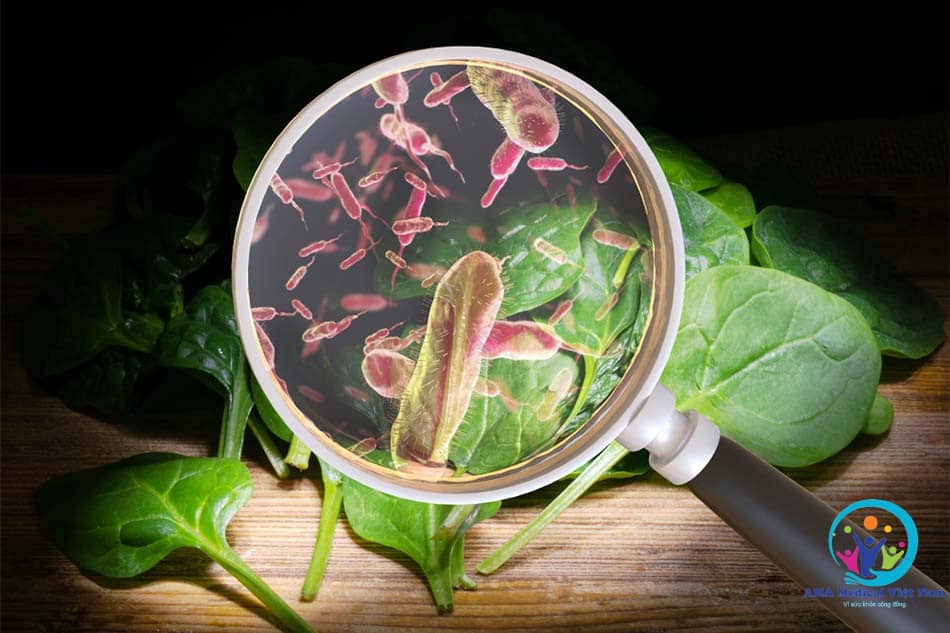
Các manh mối quan trọng để xác định căn nguyên của bệnh do thực phẩm là:
- Thời gian ủ bệnh;
- Thời gian bị bệnh do hậu quả;
- Các triệu chứng lâm sàng chủ yếu;
- Dân số tham gia vào vụ dịch.
Các manh mối bổ sung có thể được tìm ra bằng cách hỏi xem bệnh nhân đã tiêu thụ thực phẩm sống hoặc nấu chưa chín (ví dụ, trứng sống hoặc chưa nấu chín, thịt, động vật có vỏ, cá), sữa hoặc nước trái cây chưa tiệt trùng, đồ đóng hộp tại nhà, sản phẩm tươi sống hoặc pho mát mềm làm từ sữa chưa tiệt trùng. Hỏi xem có bất kỳ thành viên nào trong gia đình hoặc bạn thân của bệnh nhân có các triệu chứng tương tự hay không. Các câu hỏi về việc sinh sống hoặc đến thăm trang trại, tiếp xúc với vật nuôi, đi chăm sóc ban ngày, nghề nghiệp, du lịch nước ngoài, du lịch đến các vùng ven biển, du ngoạn cắm trại đến núi hoặc các khu vực khác nơi sử dụng nước chưa qua xử lý và tham gia các buổi dã ngoại nhóm hoặc các chuyến đi chơi tương tự manh mối để xác định căn nguyên của bệnh.
Nếu nghi ngờ mắc bệnh do thực phẩm, hãy gửi các mẫu vật thích hợp để kiểm tra trong phòng thí nghiệm và liên hệ với sở y tế địa phương để được tư vấn về điều tra dịch tễ học. Đối với bác sĩ hoặc chuyên gia chăm sóc sức khỏe khác, khó có thể ám chỉ một nguồn cụ thể trong việc lây truyền bệnh chỉ từ một lần gặp bệnh nhân. Các nỗ lực xác định nguồn gốc của sự bùng phát tốt nhất nên để các cơ quan y tế công cộng.
Vì bệnh tiêu chảy nhiễm trùng có thể lây lan và dễ lây lan nên việc xác định nhanh chóng và dứt điểm tác nhân gây bệnh có thể giúp kiểm soát sự bùng phát dịch bệnh. Việc xác định sớm một trường hợp mắc bệnh do thực phẩm có thể ngăn ngừa phơi nhiễm thêm. Một cá nhân bác sĩ có được xét nghiệm có thể đóng góp manh mối cuối cùng dẫn đến việc xác định nguồn gốc bùng phát.
Cuối cùng, các chuyên gia chăm sóc sức khỏe nên nhận ra rằng mặc dù cố ý ô nhiễm thực phẩm là một trường hợp hiếm gặp, nhưng nó đã được ghi nhận trong quá khứ. Các sự kiện sau đây có thể gợi ý rằng sự ô nhiễm cố ý đã xảy ra: một tác nhân bất thường hoặc mầm bệnh trong thực phẩm thông thường, một tác nhân thông thường hoặc mầm bệnh ảnh hưởng đến một số lượng lớn người bất thường, hoặc một tác nhân phổ biến hoặc mầm bệnh không thường thấy trong thực hành lâm sàng, như có thể xảy ra ngộ độc thuốc trừ sâu.
Xem thêm: Uống giấm gạo có giúp giảm cân không? Cách sử dụng giấm gạo hiệu quả
Chẩn đoán bệnh do thực phẩm
Chẩn đoán phân biệt
Một loạt các tác nhân lây nhiễm và không lây nhiễm nên được xem xét ở những bệnh nhân bị nghi ngờ mắc bệnh do thực phẩm. Tuy nhiên, việc xác định chẩn đoán có thể khó khăn, đặc biệt ở những bệnh nhân bị tiêu chảy kéo dài hoặc mãn tính, những người bị đau bụng dữ dội và khi có một quá trình bệnh tiềm ẩn. Mức độ đánh giá chẩn đoán phụ thuộc vào hình ảnh lâm sàng, chẩn đoán phân biệt được xem xét và đánh giá lâm sàng.
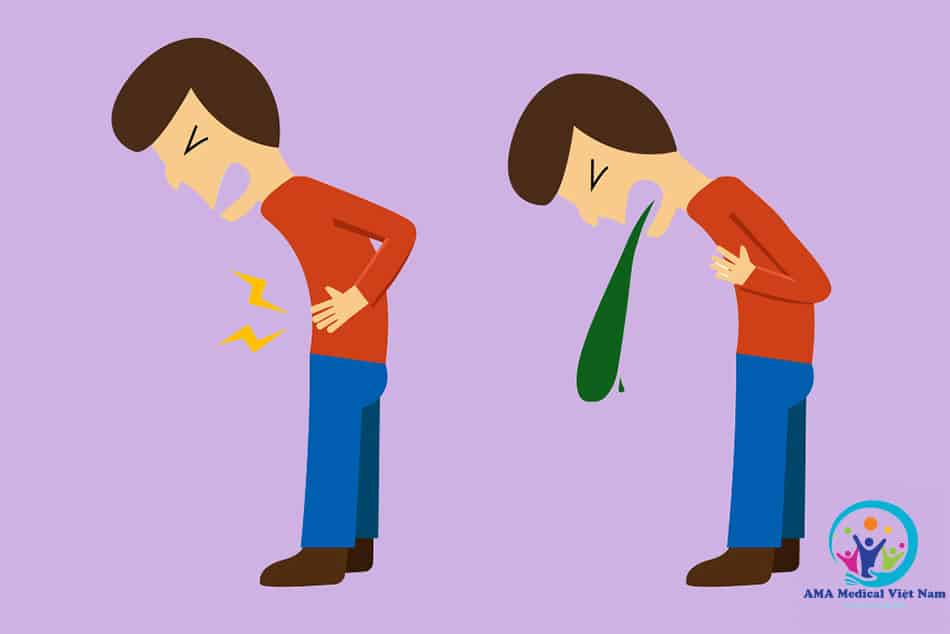
Biểu hiện của một bệnh nhân mắc bệnh do thực phẩm thường chỉ khác một chút so với biểu hiện của một bệnh nhân có hội chứng do vi rút. Ngoài ra, các hội chứng vi-rút rất phổ biến đến mức có thể giả định rằng một tỷ lệ phần trăm những người được chẩn đoán mắc hội chứng vi-rút đã thực sự mắc bệnh do thực phẩm gây ra. Do đó, hội chứng virus phải được loại trừ để nghi ngờ bệnh do thực phẩm và thực hiện các hành động y tế công cộng thích hợp. Sốt, tiêu chảy và đau quặn bụng có thể có hoặc không có trong cả hai trường hợp nên chúng không hữu ích lắm. Việc không có myalgias hoặc arthralgias sẽ làm giảm khả năng mắc hội chứng virus và bệnh do thực phẩm (không nhắm vào hệ thần kinh) dễ xảy ra hơn. Các bệnh do thực phẩm gây ra nhằm vào hệ thần kinh có xu hướng gây ra chứng liệt, yếu và tê liệt, có thể phân biệt được với bệnh đau cơ hoặc đau khớp (xem bên dưới). Sự hiện diện của bệnh kiết lỵ (tiêu chảy ra máu) cũng là dấu hiệu của một bệnh do thực phẩm, đặc biệt là nếu bệnh ở giai đoạn đầu.
Nếu bất kỳ dấu hiệu và triệu chứng nào sau đây xảy ra ở bệnh nhân, một mình hoặc kết hợp, xét nghiệm trong phòng thí nghiệm có thể cung cấp các manh mối chẩn đoán quan trọng (cần đặc biệt chú ý đến bệnh nhân rất trẻ và cao tuổi và bệnh nhân suy giảm miễn dịch, tất cả đều dễ bị tổn thương hơn):
- Tiêu chảy ra máu
- Giảm cân
- Tiêu chảy dẫn đến mất nước
- Sốt
- Tiêu chảy kéo dài (3 hoặc nhiều phân không thành khuôn mỗi ngày, kéo dài vài ngày)
- Liên quan đến thần kinh, chẳng hạn như dị cảm, yếu vận động, liệt dây thần kinh sọ
- Đột ngột buồn nôn, nôn mửa, tiêu chảy
- Đau bụng nặng
Ngoài các nguyên nhân từ thực phẩm, chẩn đoán phân biệt với bệnh đường tiêu hóa cần bao gồm các bệnh lý cơ bản như hội chứng ruột kích thích; bệnh viêm ruột như bệnh Crohn hoặc viêm loét đại tràng; bệnh ác tính; sử dụng thuốc (bao gồm cả kháng sinh liên quan đến Clostridium difficile viêm ruột kết độc tố); phẫu thuật đường tiêu hóa hoặc bức xạ; các hội chứng kém hấp thu; thiếu hụt miễn dịch; và nhiều nguyên nhân cấu trúc, chức năng và chuyển hóa khác. Cũng cần xem xét các yếu tố ngoại sinh như mối liên hệ của bệnh với việc đi lại, nghề nghiệp, căng thẳng về cảm xúc, thói quen tình dục, tiếp xúc với những người bị bệnh khác, nhập viện gần đây, đến trung tâm chăm sóc trẻ em và nơi ở của viện dưỡng lão.
Việc chẩn đoán phân biệt những bệnh nhân có các triệu chứng thần kinh do bệnh do thực phẩm cũng rất phức tạp. Các nguyên nhân có thể liên quan đến thực phẩm cần xem xét bao gồm ăn hải sản bị nhiễm độc gần đây, ngộ độc nấm và ngộ độc hóa chất. Bởi vì việc ăn phải một số chất độc (ví dụ như độc tố botulinum, tetrodotoxin) và các hóa chất (ví dụ, organophosphates) có thể đe dọa tính mạng, nên phải nhanh chóng chẩn đoán phân biệt với điều trị tích cực và các biện pháp hỗ trợ sự sống (ví dụ: hỗ trợ hô hấp, dùng thuốc kháng độc tố hoặc atropine), và có thể nhập viện.
Xem thêm: Đau nhức xương khớp có ăn thịt gà được không? [Chuyên gia trả lời]
Thử nghiệm vi sinh lâm sàng
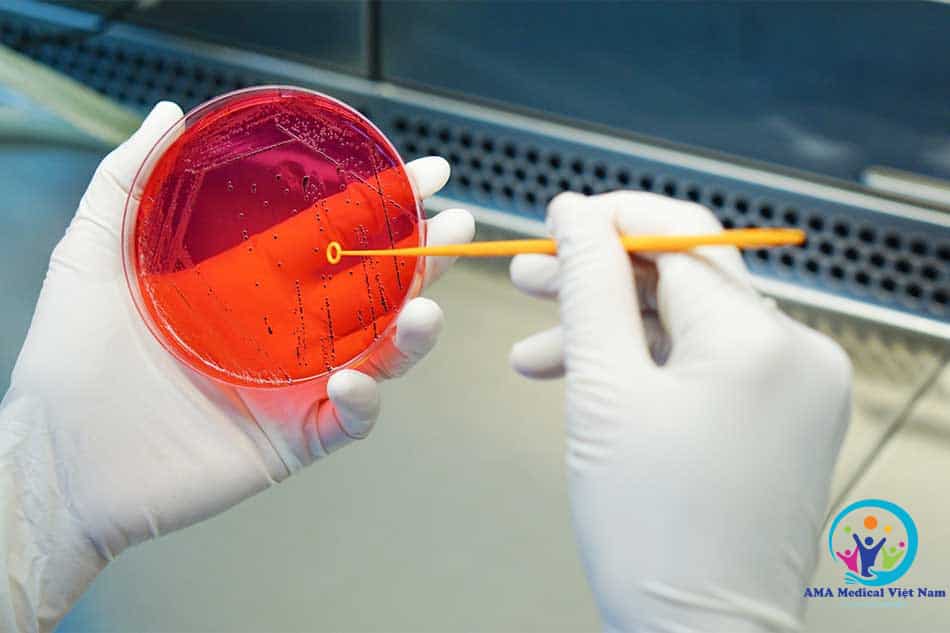
Khi gửi mẫu để xét nghiệm vi sinh, điều quan trọng là phải nhận ra rằng các phòng xét nghiệm vi sinh lâm sàng khác nhau về các quy trình được sử dụng để phát hiện mầm bệnh. Để tối ưu hóa việc phục hồi tác nhân gây bệnh, bác sĩ và các chuyên gia chăm sóc sức khỏe khác nên hiểu các quy trình lấy mẫu và xét nghiệm thường quy cũng như các trường hợp và quy trình thực hiện các yêu cầu xét nghiệm đặc biệt. Một số xét nghiệm phức tạp (ví dụ: xét nghiệm độc tố, phân loại huyết thanh, kỹ thuật phân tử) có thể chỉ có ở các phòng thí nghiệm thương mại hoặc y tế công cộng lớn. Liên hệ với phòng thí nghiệm vi sinh của bạn để biết thêm thông tin.
Cấy phân được chỉ định nếu bệnh nhân bị suy giảm miễn dịch, sốt, tiêu chảy ra máu, đau bụng dữ dội, hoặc nếu bệnh cảnh lâm sàng nghiêm trọng hoặc dai dẳng. Cấy phân cũng được khuyến khích nếu có nhiều bạch cầu trong phân. Điều này cho thấy tình trạng viêm đại tràng lan tỏa và gợi ý đến các mầm bệnh vi khuẩn xâm nhập như Shigella, Salmonella, các loài Campylobacter và E. coli xâm nhập. Trong hầu hết các phòng thí nghiệm, việc cấy phân thông thường được giới hạn để sàng lọc các loài Salmonella và Shigella và Campylobacter jejuni / coli. Nuôi cấy Vibrio vàCác loài Yersinia, E. coli O157: H7, và các loài Campylobacter không phải jejuni / coli yêu cầu môi trường hoặc điều kiện ủ bệnh bổ sung và do đó cần thông báo trước hoặc liên lạc với nhân viên phòng thí nghiệm và bệnh truyền nhiễm.
Xét nghiệm phân tìm ký sinh trùng thường được chỉ định cho những bệnh nhân có tiền sử đi lại gợi ý, người bị suy giảm miễn dịch, người bị tiêu chảy mãn tính hoặc dai dẳng, hoặc khi bệnh tiêu chảy không đáp ứng với liệu pháp kháng sinh thích hợp. Xét nghiệm phân tìm ký sinh trùng cũng được chỉ định đối với các bệnh lý đường tiêu hóa, có biểu hiện thời gian ủ bệnh lâu. Yêu cầu kiểm tra buồng trứng và ký sinh trùng trên mẫu phân thường sẽ cho phép xác định Giardia lamblia và Entamoeba histolytica, nhưng có thể cần một yêu cầu đặc biệt để phát hiện Cryptosporidium và Cyclospora cayetanensis. Mỗi phòng thí nghiệm có thể khác nhau về quy trình phát hiện ký sinh trùng thông thường, vì vậy điều quan trọng là bạn phải liên hệ với phòng thí nghiệm của mình.
Cần cấy máu khi nghi ngờ nhiễm khuẩn huyết hoặc nhiễm trùng toàn thân.
Các xét nghiệm phát hiện kháng nguyên trực tiếp và kỹ thuật sinh học phân tử có sẵn để xác định nhanh một số tác nhân vi khuẩn, vi rút và ký sinh trùng trong bệnh phẩm. Trong một số trường hợp, xét nghiệm vi sinh và hóa học đối với chất nôn hoặc các thực phẩm có liên quan cũng được đảm bảo. Để biết thêm thông tin về các quy trình trong phòng thí nghiệm nhằm phát hiện mầm bệnh từ thực phẩm, hãy tham khảo ý kiến của chuyên gia y tế thích hợp, nhà vi sinh vật lâm sàng hoặc phòng thí nghiệm y tế công cộng tại địa phương.
Điều trị bệnh do thực phẩm
Lựa chọn phương pháp điều trị thích hợp phụ thuộc vào việc xác định tác nhân gây bệnh (nếu có thể) và xác định xem liệu pháp cụ thể có sẵn hay không. Nhiều đợt viêm dạ dày ruột cấp tính tự giới hạn và cần bù dịch và chăm sóc hỗ trợ. Việc bù nước bằng đường uống được chỉ định cho những bệnh nhân bị mất nước từ nhẹ đến vừa; Liệu pháp tiêm tĩnh mạch có thể được yêu cầu đối với tình trạng mất nước nghiêm trọng hơn. Không nên sử dụng thường xuyên thuốc trị tiêu chảy vì nhiều thuốc trong số này có khả năng gây tác dụng phụ nghiêm trọng ở trẻ sơ sinh và trẻ nhỏ.
Lựa chọn liệu pháp kháng sinh phải dựa trên:
- Các dấu hiệu và triệu chứng lâm sàng;
- Sinh vật phát hiện trong bệnh phẩm;
- Các xét nghiệm về độ nhạy cảm với kháng sinh đồ;
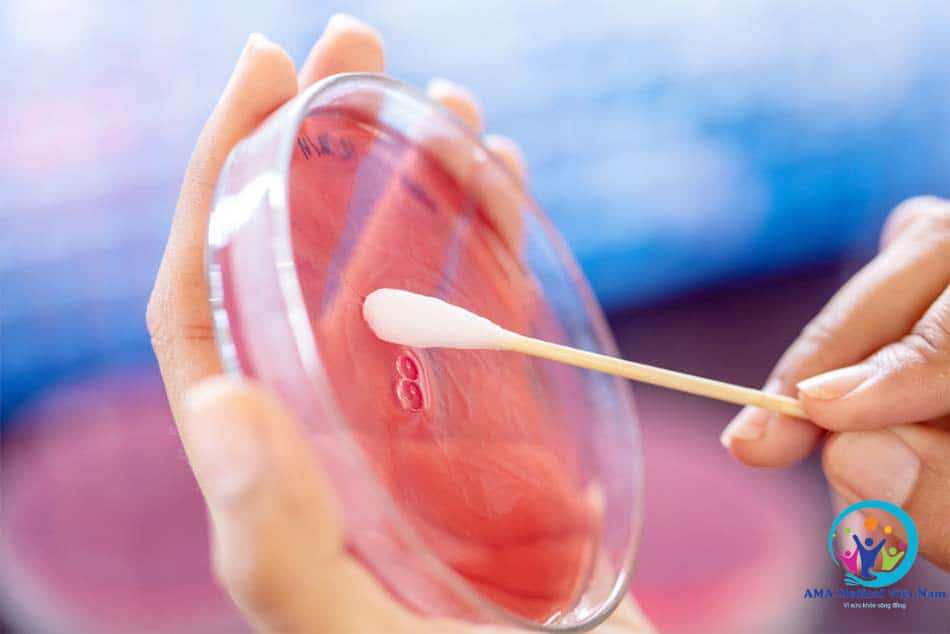
- Sự phù hợp của việc điều trị bằng thuốc kháng sinh (tốt nhất là không nên điều trị một số bệnh nhiễm trùng đường ruột).
Kiến thức về tác nhân lây nhiễm và mô hình nhạy cảm với kháng sinh của nó cho phép bác sĩ bắt đầu, thay đổi hoặc ngừng liệu pháp kháng sinh. Những thông tin này cũng có thể hỗ trợ việc giám sát sức khỏe cộng đồng về các bệnh truyền nhiễm và xu hướng kháng thuốc kháng sinh trong cộng đồng. Sự đề kháng kháng sinh đã tăng lên đối với một số mầm bệnh đường ruột, điều này cho thấy việc sử dụng liệu pháp này một cách hợp lý.
Các trường hợp nghi ngờ mắc chứng ngộ độc thịt được điều trị bằng thuốc kháng độc botulinum. Equine botulinum antitoxin đối với loại A, B và E có thể ngăn ngừa sự tiến triển của rối loạn chức năng thần kinh nếu được dùng sớm trong quá trình bị bệnh. Các bác sĩ và các chuyên gia chăm sóc sức khỏe khác nên thông báo cho các sở y tế địa phương của họ về những trường hợp nghi ngờ mắc chứng ngộ độc thịt. CDC duy trì dịch vụ tư vấn 24 giờ để hỗ trợ các chuyên gia chăm sóc sức khỏe chẩn đoán và quản lý căn bệnh hiếm gặp này.
Giám sát và Báo cáo Bệnh tật do Thực phẩm
Báo cáo về các bệnh do thực phẩm ở Hoa Kỳ đã bắt đầu cách đây hơn 50 năm khi các quan chức y tế địa phương, lo ngại về tỷ lệ mắc và tử vong cao do sốt thương hàn và tiêu chảy ở trẻ sơ sinh, đã khuyến cáo rằng các trường hợp “sốt ruột” phải được điều tra và báo cáo. Mục đích của việc điều tra và báo cáo những trường hợp này là để thu thập thông tin về vai trò của thực phẩm, sữa và nước trong các đợt bùng phát bệnh đường tiêu hóa làm cơ sở cho các hành động y tế cộng đồng. Những nỗ lực báo cáo sớm này đã dẫn đến việc ban hành các biện pháp y tế công cộng quan trọng (ví dụ: Sắc lệnh Sữa tiệt trùng) nhằm giảm đáng kể tỷ lệ mắc bệnh do thực phẩm.
Thông thường, các chuyên gia chăm sóc sức khỏe có thể nghi ngờ bệnh do thực phẩm hoặc do sinh vật có liên quan hoặc do thông tin có sẵn khác, chẳng hạn như một số bệnh nhân ốm đã ăn cùng một loại thực phẩm. Các chuyên gia chăm sóc sức khỏe có thể đóng vai trò là tai mắt của bộ y tế bằng cách cung cấp thông tin đó cho các cơ quan y tế công cộng địa phương. Báo cáo dịch bệnh do thực phẩm không chỉ quan trọng đối với việc phòng ngừa và kiểm soát dịch bệnh mà còn có những đánh giá chính xác hơn về gánh nặng bệnh tật do thực phẩm trong cộng đồng xảy ra khi các bác sĩ và các chuyên gia chăm sóc sức khỏe khác báo cáo các bệnh do thực phẩm cho sở y tế địa phương. Ngoài ra, việc báo cáo các trường hợp mắc bệnh do thực phẩm của các bác sĩ hành nghề cho sở y tế địa phương có thể giúp cán bộ y tế xác định được ổ dịch bệnh do thực phẩm trong cộng đồng. Điều này có thể dẫn đến việc xác định sớm và loại bỏ các sản phẩm bị ô nhiễm khỏi thị trường thương mại. Nếu một nhà hàng hoặc cơ sở dịch vụ ăn uống khác được xác định là nguồn bùng phát dịch bệnh, các nhân viên y tế sẽ làm việc để điều chỉnh các hoạt động chuẩn bị thức ăn không đầy đủ, nếu cần thiết. Nếu nhà có khả năng là nguồn ô nhiễm, các nhân viên y tế có thể hướng dẫn cộng đồng về các cách xử lý thực phẩm thích hợp. Đôi khi, việc báo cáo có thể dẫn đến việc xác định một tác nhân gây bệnh do thực phẩm chưa được phát hiện trước đây.
Xem thêm: Đau mỏi vai gáy là bệnh gì? Nguyên nhân, triệu chứng và cách chữa
Thông thường, quy trình thích hợp để các chuyên gia chăm sóc sức khỏe tuân theo khi báo cáo các bệnh do thực phẩm gây ra là liên hệ với sở y tế địa phương bất cứ khi nào họ xác định được một bệnh lây truyền qua thực phẩm cụ thể. Tuy nhiên, thường không rõ liệu một bệnh nhân có mắc bệnh do thực phẩm hay không trước khi xét nghiệm chẩn đoán, vì vậy các chuyên gia chăm sóc sức khỏe cũng nên báo cáo các bệnh tiềm ẩn do thực phẩm, chẳng hạn như khi 2 hoặc nhiều bệnh nhân mắc bệnh tương tự có thể do ăn phải thức ăn thông thường. Các sở y tế địa phương sau đó báo cáo bệnh tật cho các sở y tế địa phương và xác định xem có cần điều tra thêm hay không.
Do đó, ngoài việc báo cáo các trường hợp có khả năng mắc bệnh do thực phẩm, điều quan trọng là các bác sĩ phải báo cáo sự gia tăng đáng chú ý của các bệnh bất thường, phức hợp triệu chứng hoặc mô hình bệnh (ngay cả khi không có chẩn đoán xác định) cho cơ quan y tế công cộng. Ví dụ, báo cáo kịp thời về các dạng tiêu chảy / bệnh đường tiêu hóa bất thường có thể cho phép các quan chức y tế công cộng bắt đầu điều tra dịch tễ học sớm hơn có thể nếu báo cáo đang chờ chẩn đoán nguyên nhân chính xác.
Cuối cùng, thông tin mới về an toàn thực phẩm liên tục xuất hiện. Các khuyến nghị và biện pháp phòng ngừa cho những người có nguy cơ cao được cập nhật bất cứ khi nào có dữ liệu mới về việc ngăn ngừa bệnh do thực phẩm gây ra. Các bác sĩ và các chuyên gia chăm sóc sức khỏe khác cần phải nhận thức và làm theo các thông tin mới nhất về an toàn thực phẩm.
Nguồn tham khảo
Diagnosis and Management of Foodborne Illnesses. Link: https://www.cdc.gov/mmwr/preview/mmwrhtml/rr5304a1.htm


